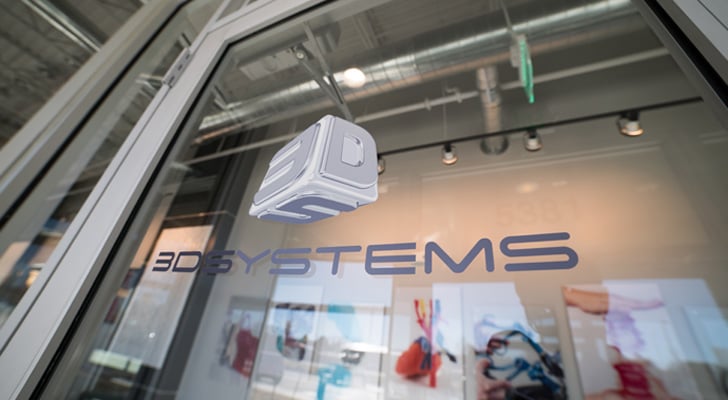A settlement notice arrived at my office the other day, offering $50 million to people who bought stock in 3D Systems Corp. (NYSE:DDD) during its heyday of 2013-2015.
Back then, 3D printing was the “next big thing” and a hobbyist culture developed around machines like the 3D Systems Cube, which extruded melted plastic onto a platform, under software control, to make simple objects.
People compared it to the PC revolution of the 1970s, but once customers found they only made plastic gewgaws they stopped buying them. Once they got bored they stopped buying the plastic. So 3D finally took the hit by killing Cube, a $596.4 million net loss in 2015’s fourth quarter, $5.32 per share, on revenue of $183.4 million.
Taking the Hit
I won’t be filing for “my share” of this money, because I wasn’t hurt. I got out of the stock before the end and came out with a small profit. Shares that peaked at the end of 2013 near $60 per share open for trade April 4, 2018 at $11.26.
Ironically, 3D Systems didn’t start the boom. The “Steve Jobs” of all this was Bre Pettis and MakerBot, whose Replicator machines were made in Brooklyn and sparked talk of an industrial revolution early in the decade.
Pettis was glib, he was photogenic, he was a true believer, and the press ate him up, especially when he sold MakerBot to 3D rival Stratasys Ltd. (NASDAQ:SSYS) for $403 million. The Cube was 3D’s reaction to the boom.
The fact is that 3D Systems, based in Rock Hill, South Carolina, outside Charlotte, had always been a far more serious outfit. It was founded in 1986 by Chuck Hull, now 79. He called it stereolithography and holds over 60 patents. He is still listed as 3D’s chief technology officer.
After the Fire
Because of its accuracy, 3D printing does have real uses. It’s good for rapid prototyping and low volume production. It’s especially useful for making medical parts like artificial knees and dental bridges, because of its accuracy. Some car companies even use it for making after-market parts.
But, financially, 3D Systems is back to being what it was before the boom happened, a marginal printer and equipment maker. Its gross profit of $85.46 million for the fourth quarter, for instance, was more than eaten up by the $22.97 million put into research, resulting in an operating loss of $5.7 million and total net loss of $10.13 million. The market cap is $1.28 billion.
The company isn’t under threat. There’s only $7 million of debt, receivables are finely balanced with payables, and there’s $136.3 million of cash and equivalents. In some ways it’s as if the boom never happened.
But forget the old talk of a “big two” in the field. Stratasys is in no better shape, and innovation can come from anywhere — like Italy, where a company called Reboze has just opened a U.S. office to sell medical implants or China, where Intamsys has just launched a global 3D printing service.
The Bottom Line on 3D Systems Stock
The “additive manufacturing” market is not as large, and not growing as quickly, as bulls thought, although maybe it’s developing much as Chuck Hull thought it would a decade ago.
The field still needs big breakthroughs in speed, in materials, and in costs. There was once a belief that HP Inc. (NYSE:HPQ) would transform everything with its Jet Fusion line, which saw its first deliveries almost two years ago, but that hasn’t happened either.
After the fire, the fire still burns, as Pete Townsend sang. The heart grows older, but it never, ever learns. The 3D printing race remains one among technologists, moving at a tortoise pace, and you should not expect that to change.
Dana Blankenhorn is a financial and technology journalist. He is the author of the historical mystery romance The Reluctant Detective Travels in Time, available now at the Amazon Kindle store. Write him at danablankenhorn@gmail.com or follow him on Twitter at @danablankenhorn. As of this writing he owned no shares in companies mentioned in this story.

